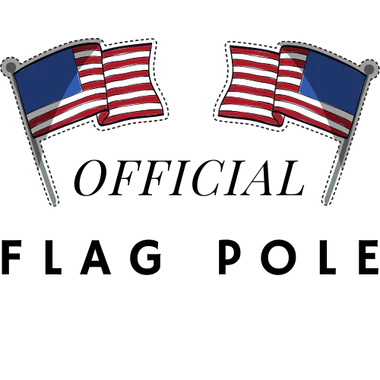Flagpole history
Flagpoles originally started as simple pieces of wood.They began springing up throughout the world as a way to show different territories, nations and military positions. At the start, flagpoles were as simple as a tree with a flag tied to its top branches, but as time shifted more and more people decided that they wanted to make them more refined as a way to show respect. Woodworkers started treating the wood, sanding and polishing it, achieving a more prestigious look. Further into the future, during the industrial revolution, people stopped using wood and started using steel to make their flagpoles even stronger. One other major differences that occurred at that time was the invention of sectional construction - that way the poles were stronger, more mobile and flags could be flown at different heights. The other time period that propelled innovation for flagpoles was the time around World War II. Both because of the inventions in different spheres using metals (like weapons, ships, airplanes etc.) and the strong nationalist way of thinking, flagpole usage skyrocketed. Manufacturers started using alloys and different techniques to make their products even better than before. Today flagpoles come in different shapes and sizes, with different colors and ornaments and are still in a lot of demand.
Flagpole fun facts
- Almost all flagpoles have a plate or ball on the top named a truck - it was made so that wooden poles don’t slip from the top down. Whereas the rope that ties the flag to the pole is called a halyard.
- The tallest flagpole in the United States (and the one currently flying an American flag the highest) is situated in Wisconsin. It is 120m (400ft) and it can fly a 220-pound flag in low wind conditions and 350-pound one in high wind conditions. It was made for Memorial Day in 2014 and can be seen all the way from Cedar Grove.The flagpole stands nearly 100 feet taller than the Statue of Liberty and it took over 500 gallons of paint to cover the pole itself. There is a veteran memorial at the base of the flagpole. There you can see names from different battles, dating all the way back to the Civil War.
Flag history
The American flag has a long and interesting history. It started in 1776 with the command of George Washington. The inspiration for the design of the flag however came from Benjamin Franklin. He believed that designing the flag in a way similar to the one of the East India Company and England will mark both their will to be self-governing like the trading company, but will also show that they still have respect towards the british crown. The first description of the star-spangled banner came a year later, with the added explanation that the stars represent a new constellation in the world. That is also the time when the American flag was first used - during the battle for fort Schuyler on August 3rd 1777. After that a lot of changes occurred, but they were all brief. The design that is used now is the longest lasting one - over 60 years since it has been changed. The American flag is used in many different situations and is one of the most recognisable symbols of the United States. It can be commonly seen throughout the country on all sorts of official buildings (such as governments, courts, banks etc.) as well as many houses and homes. The American flag is flown on funerals, elections, holidays etc. and there is a very special etiquette regarding the ceremonies which include displaying the star-spangled banner.
Flag fun facts
- There is a part of science and history dedicated to flags, known as vexillology, from the latin word vexillum, which means banner. The first ‘’flag’’ is as old as latin itself, dating back to the 3rd millennium BC. It was made in Iran and was made entirely of bronze. The first flags made of fabric originated in ancient Egypt or Assyria.
- One of the first items that could also be described as a flag is the ‘’Dragon standard’’ of the Sarmatians. It was always carried by a horseman and it was left to fly in the wind similar to our modern day kites.
- The oldest national flag that is still in use is that of Denmark, it was made in 1478 and it has its own name: the Dannebrog. It is also the first to use the cross that inspired the design of the flags of Norway, Sweden, Iceland and Finland.
- The United States national flag is nicknamed The Stars and Stripes or Old Glory, but it wasn’t always what we now know. This was because when the American flag was first described, the positions of the stars weren’t specified and so different parts of the world made it differently. One of the most widely known is the one of Betsy Ross.
